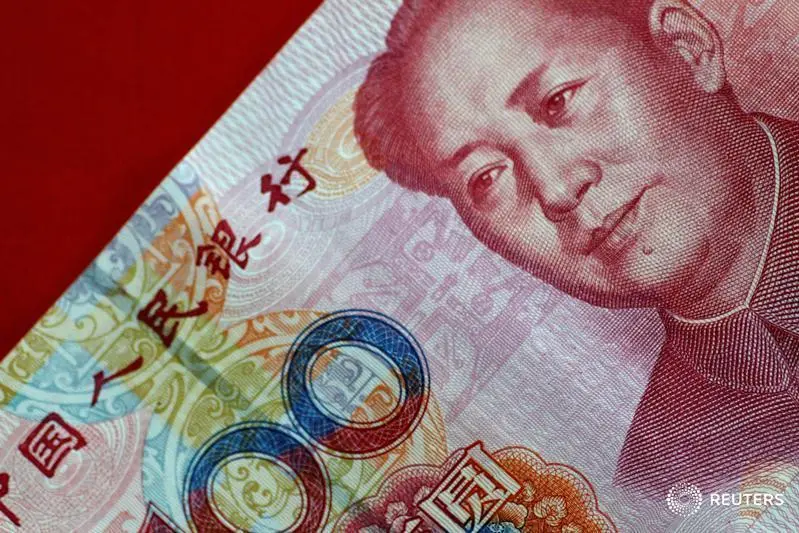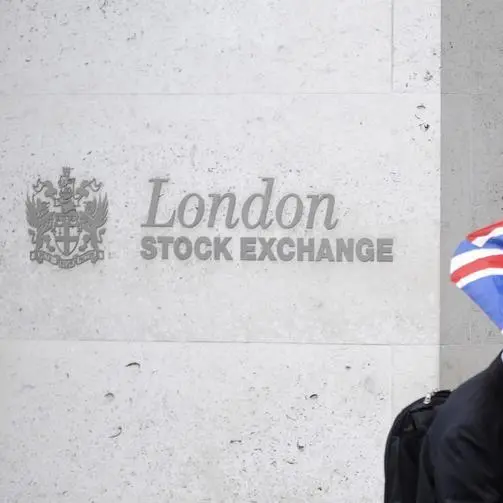PHOTO
HONG KONG - The yuan traded flat on Thursday on expectations that a U.S.-China "phase one" trade agreement will be delayed, but it pared some losses after China's top negotiator reportedly expressed optimism in sealing a deal.
Market confidence was shaken in early trade after U.S. President Donald Trump said he did not think Beijing was stepping up to the level that he wanted in the trade talks.
People close to the White House and trade experts have said the deal could be pushed back until next year as Beijing presses for more extensive tariff rollbacks and Washington ramps up its own demands.
"As optimism fades for a trade deal this year, the risk has returned for the planned U.S. tariffs on December 15 to proceed," DBS' analysts wrote in a note on Thursday.
The yuan scaled back some losses after Bloomberg reported mid-morning that Chinese Vice Premier Liu He said he was "cautiously optimistic" in reaching a "phase one" deal, but added that he was "confused" about U.S. demands.
By midday, the onshore yuan was relatively flat at 7.0385 versus its close at 7.0364 on Wednesday, having hit its weakest in three weeks earlier in the session. The offshore yuan was also little changed at 7.0405.
Prior to the open, the People's Bank of China set the midpoint rate at its weakest since Nov. 5 at 7.0217, close to Reuters' estimate of 7.0209.
"The yuan basically follows news on the trade war," said a trader with a foreign bank in Shanghai. "It's hard to predict when we will have good news or bad news."
Another trader in Shanghai said these headlines are mostly noise and will not alter the yuan's trajectory significantly.
"Market sentiment may change but the fundamentals of the negotiations have not. There have always been unresolved issues in these talks," he said. "There is not a lot of willingness in the market to bet on one direction or another."
The trade tussle was further complicated on Wednesday when the U.S. House of Representatives passed two bills to back protesters in Hong Kong, with Trump expected to sign them into law despite China's objection.
Tommy Xie, an economist at OCBC Bank in Singapore, said the Hong Kong issue will weigh on U.S.-China relations, and make it less likely for the yuan to return to the 6.9 per dollar handle.
The Thomson Reuters/HKEX Global CNH index .RXYH , which tracks the offshore yuan against a basket of currencies on a daily basis, stood at 91.9, slightly weaker than the previous day's 91.95.
The yuan market at 0401 GMT:
ONSHORE SPOT: Item Current Previous Change PBOC midpoint 7.0217 7.0118 -0.14% CNY=SAEC Spot yuan 7.0385 7.0364 -0.03% CNY=CFXS Divergence from 0.24% midpoint* Spot change YTD -2.35% Spot change since 2005 17.59% revaluation
Key indexes:
Item Current Previous Change
Thomson 91.9 91.95 -0.1 Reuters/HKEX CNH index Dollar index 97.878 97.934 -0.1
*Divergence of the dollar/yuan exchange rate. Negative number indicates that spot yuan is trading stronger than the midpoint. The People's Bank of China (PBOC) allows the exchange rate to rise or fall 2 percent from official midpoint rate it sets each morning.
OFFSHORE CNH MARKET
Instrument Current Difference
from onshore Offshore spot yuan 7.0405 -0.03% CNH= * Offshore 7.111 -1.26% non-deliverable forwards CNY1YNDFOR= **
*Premium for offshore spot over onshore CNY=CFXS **Figure reflects difference from PBOC's official midpoint, since non-deliverable forwards are settled against the midpoint. CNY=SAEC .
(Reporting by Noah Sin; Additional reporting by Jindong Zhang in Shanghai; Editing by Jacqueline Wong) ((Noah.Sin@thomsonreuters.com; +852 2841 5782; Reuters Messaging: noah.sin.thomsonreuters.com@reuters.net; Twitter: https://twitter.com/noah_sin))












